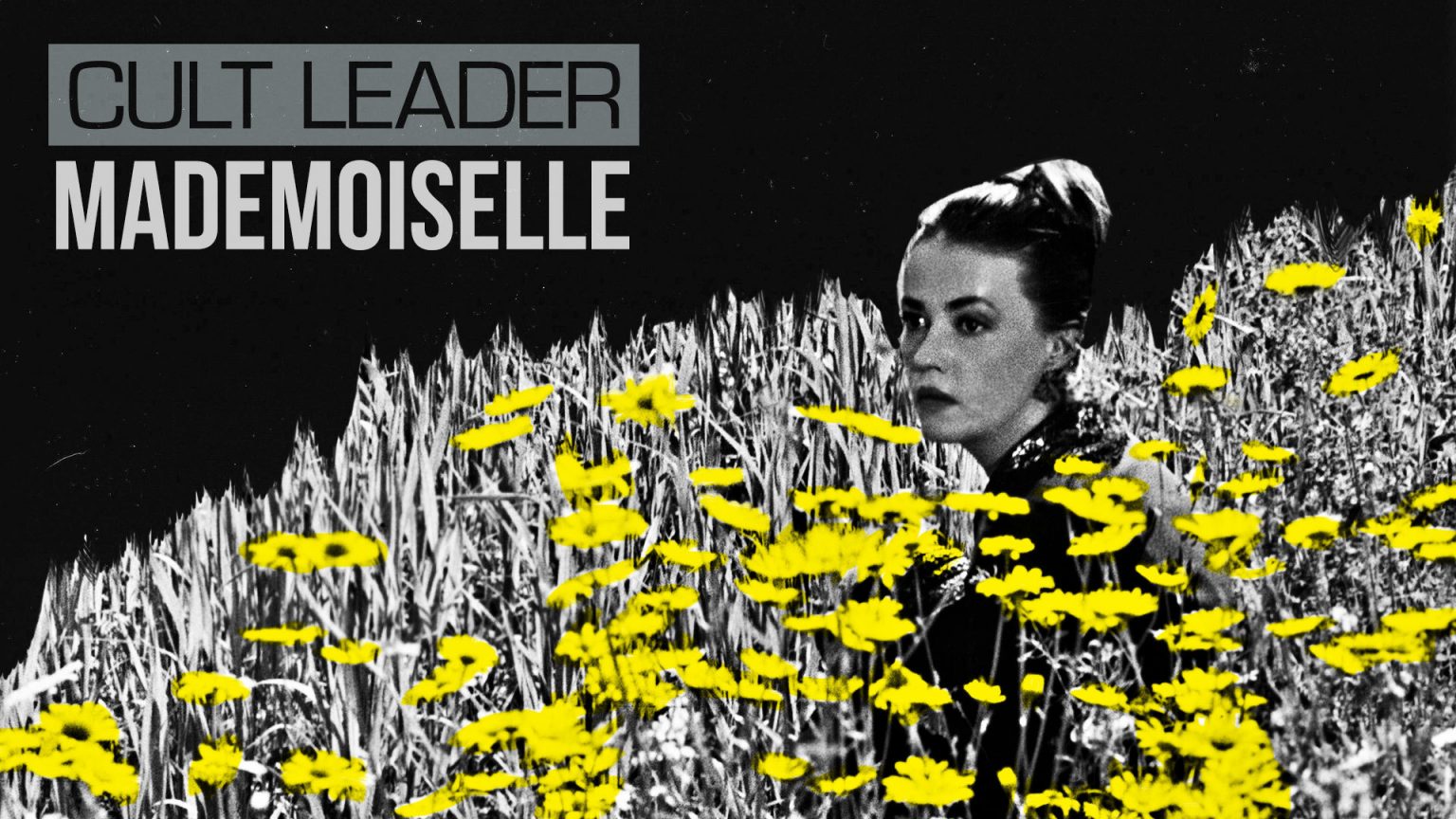Have you ever been so sex-starved you just had to destroy a rural village in France? (Of course, you have. We all have.) Despite sounding like a 1970s sexploitation plot, this (admittedly simplified) premise actually derives from an artful collaboration between French icon Jeanne Moreau, literary heavyweights Jean Genet and Marguerite Duras, and British New Wave director Tony Richardson. After winning the Academy Awards for Best Picture and Best Director for Tom Jones in 1964, Richardson released Mademoiselle, a film about a sociopathic school teacher who gets off wreaking havoc in a provincial town (which he shot simultaneously with his film The Sailor from Gibraltar, another collaboration with Moreau and Duras). Despite receiving a Palme d’Or nomination at the 1966 Cannes Film Festival, Mademoiselle was panned by critics and is currently only available in a lackluster transfer.
A rural school teacher—played by Moreau and known only as “Mademoiselle” throughout the film—secretly unleashes floods, fires, and pestilence on unsuspecting townsfolk as they rush to accuse Manou, a swarthy seasonal laborer from Italy who has been bedding every available (and unavailable) woman in the surrounding area. Mademoiselle also derives pleasure from persecuting one of her young students, Bruno, the son of Manou. A possible motive for her actions is presented in a flashback that lasts almost the entire second act. A year earlier, the seemingly benevolent Mademoiselle (who just moved from Paris) begins to feel sexual stirrings after a few innocuous run-ins with Manou in the woods just outside of town. After one of these encounters accidentally results in a deadly fire, her hunger for Manou becomes inexorably linked to a newfound appetite for destruction. The young Bruno, once a teacher’s pet, grapples with Mademoiselle’s shift in attitude towards him and with the discovery of her dark secret. Even when Mademoiselle and Manou finally consummate their lust, she shows no remorse when the villagers exact their revenge on the former object of her desire. She departs the village (with much fanfare from her neighbors) as cheerfully as she arrived, and the audience is left to wonder if the events that unfolded are a revelation or a pattern.
From the first shot of her creating a flood, the audience is never left to wonder about the identity of the one truly laying waste to the village. For the most part, her motives are unclear. Unrequited desire is only the match that lights the powder keg (pyro pun intended). When Mademoiselle and Manou finally make love in the field, it is assumed the dominatrix tendencies she has expressed throughout the film will come full circle, but surprisingly, Mademoiselle plays the “Sub” to his “Dom.” Mademoiselle kisses his boots and playfully whimpers like a lap dog, all while Manou laughs sportingly. The pastoral setting and sensuous black-and-white cinematography of David Watkin (who worked on movies as varied as Help! and Out of Africa) almost beg for obvious Garden of Eden metaphors, but Mademoiselle finds creation only in destruction. She is not a fallen woman whose sins lead to her downfall; she is a nihilistic sphinx with many unsavory fetishes and no redemptive arc. Categorically, it is unwise to describe a woman as an unknowable being, yet Mademoiselle is fair game because she is an allegory of women’s dissatisfaction with traditional maternal characterizations.
Hollywood’s most complicated female leads (such as Gene Tierney in 1945’s Leave Her to Heaven) were usually guided by practical matters: greed, jealousy, or circumventing the law. Mid-century European films were more apt to characterize a woman’s emotional or existential concerns (Roberto Rossellini’s Stromboli or Ingmar Bergman’s Through a Glass Darkly). However, Mademoiselle was perhaps the first female lead to not only express zero guilt for her actions but to find sadistic glee in them. In a juxtaposition to the classic “Save the Cat” trope, she raids a bird’s nest of its eggs only to crush them in her hand with a smirk and wipe the residue on the nest for the mother bird to find later (fair warning: this is not the only depiction of violence toward animals in the film). Although the role of Mademoiselle was originally intended for French actress Anouk Aimée and Genet expressed disapproval of Moreau’s portrayal, Moreau went on to star in another Genet collaboration, Querelle (Rainer Werner Fassbinder’s final film), several years later.
There has been no shortage of unsympathetic female leads since Mademoiselle’s release. Lars Von Trier might appear to be a natural proponent, except that his female leads are more often the victim than the victimizer. Claire Denis and Catherine Breillat have made careers out of portraying impenetrable characters in chaotic circumstances. However, Michael Haneke’s oeuvre is the most fitting for comparison with Mademoiselle. Enough fodder could be found in almost any of his films (particularly Benny’s Video, Funny Games, and The Piano Teacher) but 2009’s The White Ribbon sealed the deal. It was as if once Mademoiselle left town, her students took up her torch (again, quite literally). Since the children of The White Ribbon grow up to be Nazis, let’s choose to remember their predecessor, Mademoiselle: slipping on a pair of her clandestine high heels, taping up her breasts, and sneaking out in the middle of the night to go have an innocent smoke by the haystack.




